In this study, the centrifuge model tests were used to evaluate the geotechnical properties of fiber reinforced soil walls. The reduced-scale centrifuge models were built and the clay barrier was prepared using kaoline amended silty soil. The unreinforced soil barrier was found to lose their water-tightness and integrity at lower distortion levels compared to fiber reinforced soil barriers. The silty soil used in the centrifuge models, frequently considered as having negligible creep, was ultimately found not to prevent the development of time-dependent deformations. The obtained results revealed the significant time-dependent deformations could be occurred in geotechnical structure of fiber reinforced soil walls wall systems.
fiber, centrifuge model, silty soil, geotechnical properties
In recent decade, researchers have been studied the structure of reinforced soil walls in earth retention projects [1-3]. However, the main challenge of projects is time-dependent behavior under sustained load. Therefore, development of time-dependent deformations in the geotechnical properties of reinforced soil walls under constant loading is necessary.
The time-dependent behavior reinforced soil walls is a key factor for the design of reinforced soil structures with respect to the high deformations and even creep failure of reinforced soil [4,5]. Furthermore, the creep tests conducted on geotechnical specimens tested in isolation are identified to investigate the long-term behavior of a reinforced soil structure [6]. The creep tests were almost used to accelerate the preparation of time-dependent behavior. But, the interaction between the reinforcement and the confining soil affected on the long term deformation of reinforced soil walls [7-10].
Using of reduced scale models for reinforced soil walls in the centrifuge model is an alternative approach for investigation of interactions between soil and reinforcements [11]. To investigate the long-term behavior of reinforced soil walls, the design of full-scale instrumented walls plays an important role. However, in most of reported studies, the full scale of walls did not consider for long-term behavior of reinforced soil walls. The full scaled walls provide the sufficient information about the significant deformations of reinforced soil walls over time [12-14].
The strain rate in these walls, during a special time intervals can be predicted by conventional creep tests. But a little information is available on the time-dependent deformations of reinforced soil walls. Costa et al. [15] were used centrifuge tests to evaluate the time dependent deformations in geotextile-reinforced soil walls. They indicated that the current practice of penalizing the reinforcement ultimate tensile strength using significant creep reduction factors may not be as overly conservative as sometimes speculated. Allen and Bathurst [7] measured creep rates in full-scale walls and compares them to creep rates measured in-isolation. They found that reinforcement was initially exhibiting creep, with minor stress relaxation. However, in the long-term, there was a trend toward reinforcement stress relaxation. Furthermore, the long-term behavior observed in the full-scale walls indicated that the reinforcement loads were well below values required to cause creep rupture over the design life of the structures [16].
In the present study, the centrifuge model tests were used to investigate time-dependent interaction between silty soil and fibers in reinforced soil walls. The long-term tests involved models monitored during time under constant acceleration to evaluate the time-dependent response of the reinforced soil walls under sustained loading. The centrifuge model was utilized to identify time-dependent interaction mechanisms between soil and reinforcement. The long-term behavior of reinforced soil walls structures was also investigated under stress levels using centrifuge model.
The centrifuge models were built using kaoline amended silty soil as backfill and interfacing fabrics as reinforcement zone. A transparent Plexiglas plate lined with a Mylar sheet was used as one of the side walls of the box (200 mm×400 mm×300 mm). The other walls of the strong box consisted of aluminum plates. The schematic diagram of the box is illustrated in Figure 1. The tests were carried out using centrifuge at Tehran University (Iran). There was relative density of 60% in the reinforced soil zone and of 100% in the foundation layer.
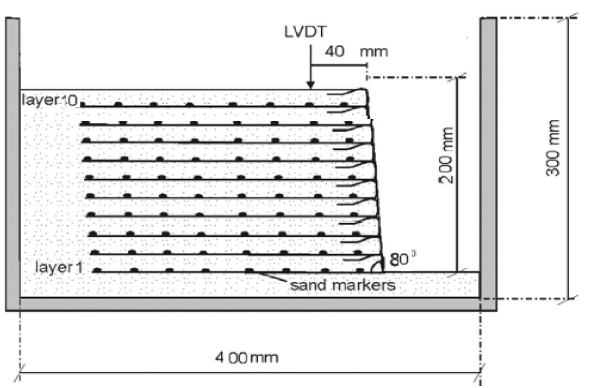
Figure 1. Schematic of centrifuge model
Models C1 to C4 involved reduced scale walls subjected to constant accelerations selected to be equal to 25, 40, 60 and 80% of the g-level tests.
The blend of kaolin and sand in the ratio of 4:1 by dry weight was used for barrier material. Polyester fibers (PET) with equivalent diameter of 40 μm and elongation strain of 19.25% strain were used as discrete fiber reinforcement. In the case of fiber reinforced soil barriers, fibers were hand-mixed at desired fiber content and length with the soil after adding with half of the desired amount of water. The fiber used in the present study is illustrated in Figure 2.
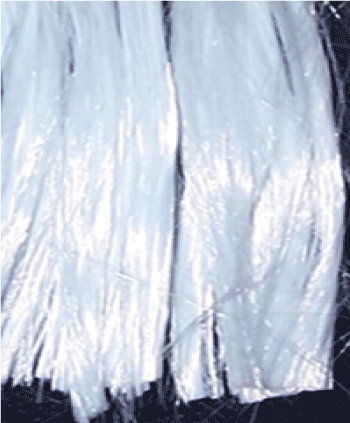
Figure 2. Polyester fibers in this work
The tensile tests with an average ultimate tensile strength of 0.033 kN/m in the cross-machine direction is illustrated in figure 3. The applied load levels were 25%, 40%, 60%, and 80% of the material ultimate tensile strength.
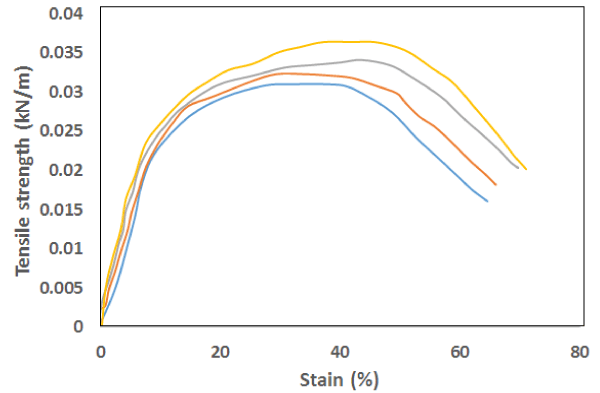
Figure 3. Tensile tests conducted in the cross-machine direction
The conventional creep tests conducted without soil confinement in accordance with ASTM D5262 (2012) are presented in figure 4. The specimens loaded to 80% of its ultimate tensile strength showed a time to creep failure ranging from 1.0 to 2.5 h.
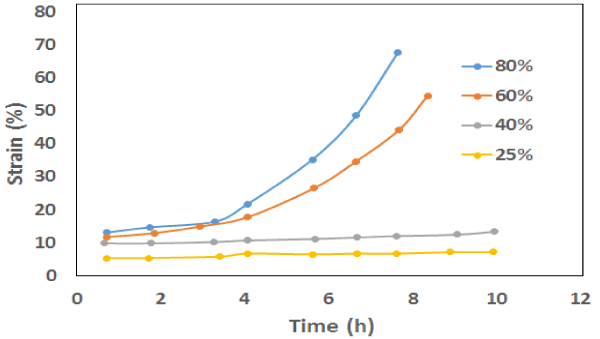
Figure 4. Conventional creep test of samples
Figure 5 shows the time-dependent settlements obtained at the top of walls constructed using PET reinforcement. The long-term behavior of the walls under constant centrifugal acceleration was evaluated within 10 h. The time in the figures was the time elapsed after having reached the target acceleration in each test. As shown in the figure 5, time-dependent settlements were observed to occur in all the tests in this series, by increasing settlement rate for increasing acceleration values. The obtained results revealed that the time-dependent characteristics of the reinforcements affected the overall time-dependent performance of the reinforced soil walls.
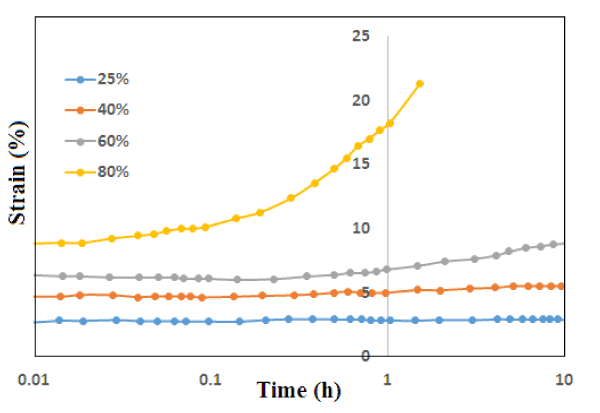
Figure 5. Time-dependent settlements obtained at the crest of models
The reinforcement strains obtained in models C4 for Long-term” tests are illustrated in figure 6. The tests were conducted under target centrifuge acceleration (N) values corresponding to 80% of the g-level at failure. Figure 6 show the time histories of strains obtained from unconfined creep tests conducted using the same geotextile. As previously mentioned, the scaling factor for time in creep evaluations of centrifuge testing was considered equal one. The magnitude of initial strains for the different layers was in the range of 7.8% to 9.8%. Similar range (7.9-9.7%) is observed for the initial strains for different unconfined tests.
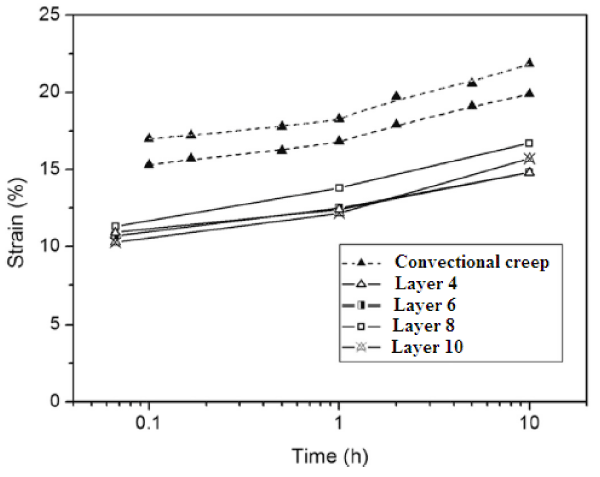
Figure 6. Time-dependent strains from model C4
The creep strain rates for different geotextile reported in the technical literature are illustrated in Figure 7, the curves were obtained using conventional creep tests results in which each curve correspond to a different geotextile specimen subjected to constant load. As shown, the creep strain rates of the geotextile simulants used as reinforcement in the centrifuge models are consistent with those reported in the literature for geotextile used in reinforced soil structures.
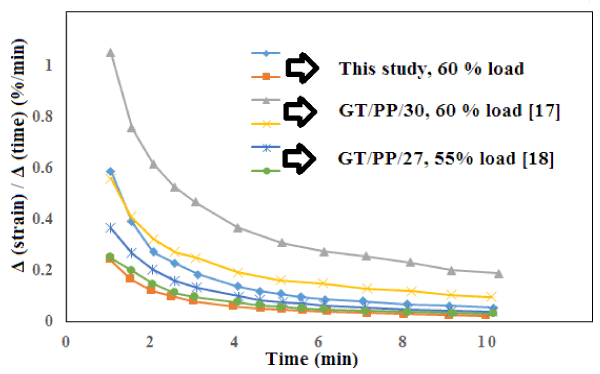
Figure 7. Creep strain rate for geotextile reported in literature, (GT: geotextile, and PP: polypropylene)
In this research, centrifuge tests were used to evaluate the time dependent deformations in fiber reinforced soil walls. The centrifuge model was tested built using PET fibers as reinforcement elements and kaoline amended silty soil as backfill material. The models were subjected to a constant acceleration and their time-dependent deformations were carried out in long term tests.
Long-term tests indicated the time-dependent deformations at the crest of the long-term models and time-dependent strains in the reinforcements. The time-dependent strain rates in centrifuge models were found to be similar to the time-dependent strain rates in unconfined samples from conventional creep.
Special thanks for supporting by Meshiran and Mokarrar Geosynthetic companies.
- Ling HI, Leshchinsky D, Chou NN (2001) Post-earthquake investigation on several geosynthetic-reinforced soil retaining walls and slopes during the Ji-Ji earthquake of Taiwan. Soil Dyn Earthquake Eng 21: 297-313.
- Sabermahani M, Ghalandarzadeh A, Fakher A (2009) Experimental study on seismic deformation modes of reinforced-soil walls. Geotex Geomemb 27: 121-136.
- Koseki J, Bathurst RJ, Guler E, Kuwano J, Maugeri M (2006) Seismic stability of reinforced soil walls. InProc. 8th International Conference on Geosynthetics, Yokohama 1: 51-77.
- Yeo SS, Hsuan YG (2010) Evaluation of creep behavior of high density polyethylene and polyethylene-terephthalate geogrids. Geotex Geomemb 28: 409-421.
- Kongkitkul W, Tatsuoka F (2007) A theoretical framework to analyse the behaviour of polymer geosynthetic reinforcement in temperature-accelerated creep tests. Geosyn Intern 14: 23-38.
- Costa CM, Zornberg JG, de Souza Bueno B, Costa YD (2016) Centrifuge evaluation of the time-dependent behavior of geotextile-reinforced soil walls. Geotex Geomemb 44: 188-200.
- Allen TM, Bathurst RJ (2002) Soil reinforcement loads in geosynthetic walls at working stress conditions. Geosyn Intern 9: 525-566.
- Ballegeer JP, Wu JT (2000) Intrinsic confined and unconfined load-deformation properties of geotextiles. InGeosynthetic Soil Reinforcement Testing Procedures 1993 Jan. ASTM International.
- Jones CJ, Clarke D (2007) The residual strength of geosynthetic reinforcement subjected to accelerated creep testing and simulated seismic events. Geotex Geomemb 25: 155-169.
- Zornberg JG, Byler BR, Knudsen JW (2004) Creep of geotextiles using time–temperature superposition methods. Journal of geotech geoenviron eng 130: 1158-1168.
- Wu JT, Helwany SM (1996) A performance test for assessment of long-term creep behavior of soil-geosynthetic composites. Geosyn Intern 3: 107-124.
- Divya PV, Viswanadham BV, Gourc JP (2016) Centrifuge model study on the performance of fiber reinforced clay-based landfill covers subjected to flexural distress. Appl Clay Sci 20.
- Li Z, Escoffier S, Kotronis P (2013) Using centrifuge tests data to identify the dynamic soil properties: Application to Fontainebleau sand. Soil Dyn Earthquake Eng 52: 77-87.
- Jabary RN, Madabhushi SP (2015) Tuned mass damper effects on the response of multi-storied structures observed in geotechnical centrifuge tests. Soil Dyn Earthquake Eng 77: 373-380.
- Costa CM, Zornberg JG, de Souza Bueno B, Costa YD (2016) Centrifuge evaluation of the time-dependent behavior of geotextile-reinforced soil walls. Geotex Geomemb 44: 188-200.
- Mirshekari M, Ghayoomi M (2017) Centrifuge tests to assess seismic site response of partially saturated sand layers. Soil Dyn Earthquake Eng 94: 254-265.
- Shrestha SC, Bell JR (1982) Creep behavior of geotextiles under sustained loads. In: Proceedings of the Second International Conference on Geotextiles, Las Vegas, USA 3: 769-774.
- Greenwood JH, Kempton GT, Watts GRA, Bush DI (2000) Twelve year creep tests on geosynthetic reinforcement. In: Proceedings of the Second European Geosynthetics Conference e EuroGeo, Bologna, Italy 1: 333-336.







